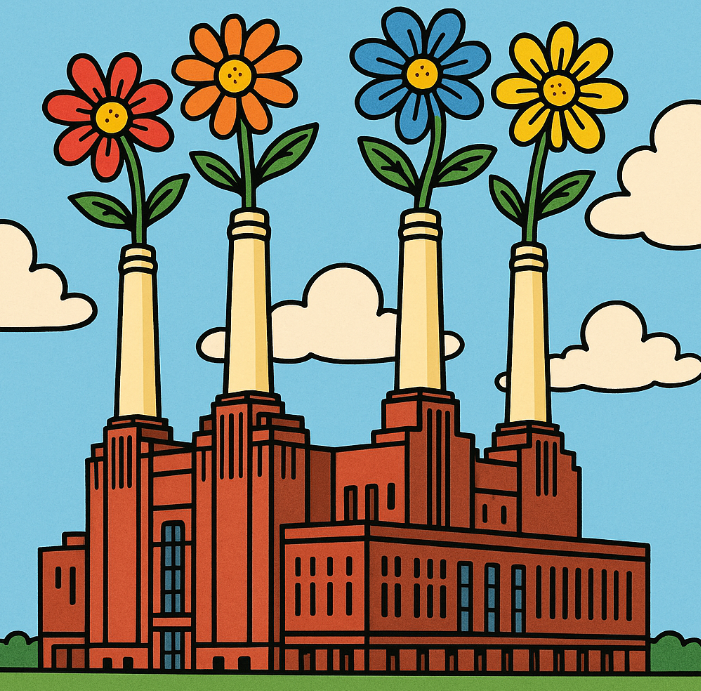
What Really Happens When Factories Go Green?
Factories produce a third of U.S. greenhouse gases. But what if cutting those emissions could also save lives, create jobs, and even heal long-scarred communities? A new study says it can—if done the right way.
The Promise and the Peril
Across the world, governments are investing billions in “industrial decarbonization.” That’s the technical name for cleaning up industries like steel, cement, and chemicals, which together are responsible for around 20% of Europe’s emissions and an even larger share in the U.S..
The methods are diverse: replacing coal with hydrogen, capturing carbon from smokestacks, electrifying factories, or redesigning supply chains to waste less. Some solutions, such as Direct Air Capture (literally sucking CO₂ from the air), sound futuristic. Others are as simple as making kilns more efficient.
But here’s the twist: these technologies don’t always help the people living next to them. In fact, some projects have made the local air worse. A study found that adding carbon capture to power plants in Texas and Louisiana would increase ammonia pollution, disproportionately harming Black and Hispanic neighborhoods.
So while industrial decarbonization could mean cleaner air globally, it could also deepen local inequalities.
Why Communities Are Wary
Picture a fishing village in Nigeria, a steel town in India, or a refinery corridor in Brazil. These communities have often borne the brunt of industrial “progress”—toxic air, contaminated water, and lost cultural practices. Promises of jobs or “community benefits” have too often fallen short.
It’s no wonder that when developers announce new projects—hydrogen hubs, carbon storage wells, or giant fans to pull CO₂ from the air—locals respond with skepticism. They’ve seen industries come and go, leaving pollution behind.
As one activist in the U.S. Gulf Coast put it during protests against new hydrogen projects: “Why should we trust another plan that puts our health on the line for someone else’s profit?”
A Different Approach: Community-Based Research
The study, led by scholars in the U.S. and published in Nature Communications, argues for a new model: community-based research
This means more than asking residents to attend a meeting or fill out a survey. It’s about recognizing communities as experts in their own right—people who know the history, risks, and hopes of their region better than any outside consultant.
Instead of treating local knowledge as “input,” researchers argue it should shape the project itself: deciding whether a project should even happen, what form it should take, and how benefits are defined.
Think of it like sports coaching. Instead of a coach dictating every play, imagine a team where players design strategies together, using their lived experience of the game. That’s the difference between top-down “engagement” and genuine collaboration.
Stories from the Field
The authors share examples where this approach is already being tried:
- Colorado, USA: Anthropologists worked with communities near former coal and steel plants to design a carbon storage project. Residents pushed to prioritize emissions from local cement factories rather than propping up oil and gas. They also demanded job training for the formerly incarcerated and expanded water testing.
- Southeast U.S.: Georgia Tech partnered with community organizations to build curricula about carbon technologies. Instead of abstract debates about “false solutions,” residents could evaluate hydrogen or electrification based on their own food, water, and land priorities.
- Arizona, USA: A “Just Energy Transition” project began with community visioning—asking residents what they loved about their towns and what kind of future they wanted. Some industries were rejected outright, even when they promised high salaries, because they clashed with community values.
These efforts show how slowing down—taking time for relationships, listening, and joint decision-making—can align projects with local priorities.
The Global Stakes
Why does this matter beyond the U.S.? Because the same dynamics play out everywhere.
- In India, where steel and cement plants drive both economic growth and deadly air pollution, workers and villages must help define what a “just transition” looks like.
- In Nigeria, communities scarred by oil extraction face similar distrust when new “green” projects are announced.
- In Brazil, Indigenous and rural groups have long fought to ensure that hydropower, biofuels, and carbon markets don’t trample their rights.
Industrial decarbonization will succeed—or fail—based on trust. And trust requires justice.
Four Lessons for the Future
The researchers highlight four takeaways for policymakers, engineers, and communities:
- Slow Down: Rushed projects erode trust. Building relationships is as important as building infrastructure.
- Expand What Counts as Benefits: Jobs and cleaner air matter, but so do cultural survival, community leadership, and knowledge-sharing.
- Train the Engineers Too: Developers often assume opposition means ignorance. Instead, they need training in justice, history, and collaboration.
- Think Across Scales: Solutions must come from the top (policy), the bottom (community action), and the middle (civil society), working together.
Or, as the authors put it: decarbonization must move at “the speed of trust.”
Let’s Explore Together
Industrial decarbonization isn’t just a technical challenge. It’s a social one. And the stakes couldn’t be higher: either we build a low-carbon future that heals old wounds, or we risk repeating past injustices under a green label.
So let’s turn the question to you:
- Could this kind of community-based research work in your city or village?
- If you were on the research team, what co-benefits would you insist on?
- What everyday problem—from air pollution to job security—do you wish science could solve in your community?
Because the path to a just, livable future won’t be decided in labs or boardrooms alone. It will be written in the streets, the villages, the factories—and in the voices of the people who call them home.



